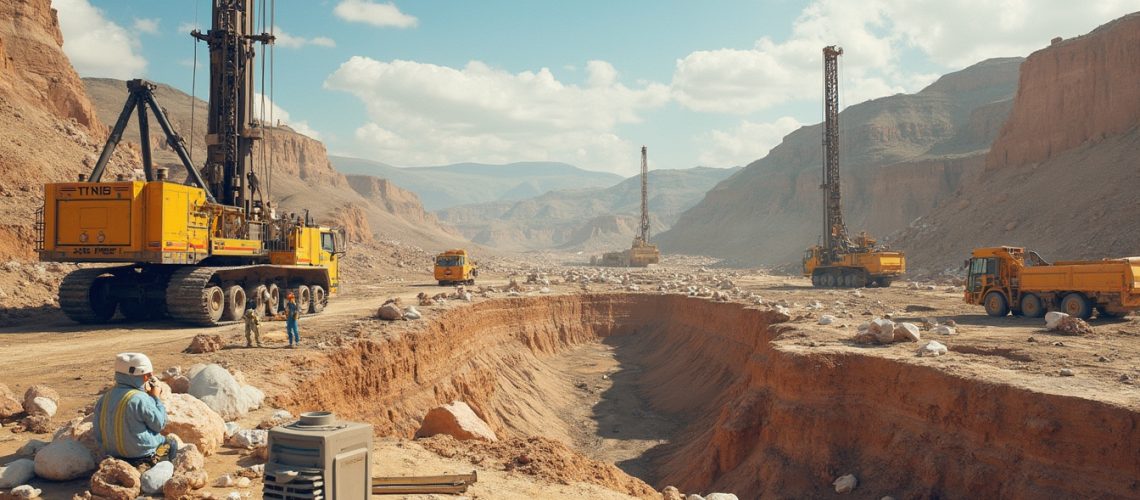Decoding Mining Drilling Results: A Beginner's Comprehensive Guide
Navigating the complex world of mining exploration can be challenging, especially when it comes to interpreting drilling results. For investors and enthusiasts eager to understand the nuances of mineral discovery, deciphering assays and drilling reports is a crucial skill. Whether you're investing in mining stocks or simply curious about the exploration process, this guide will demystify the technical language and provide insights into how mining companies uncover potential mineral deposits.
What Exactly is a Drilling Programme in Mining Exploration?
A drilling programme represents a systematic approach to geological investigation, where mining companies strategically deploy drill rigs to penetrate the earth's surface and extract core samples. These programmes are the backbone of mineral exploration, designed to either confirm existing geological theories or uncover entirely new mineral deposits.
The process involves multiple critical stages:
- Identifying potential exploration sites through geological mapping and initial surveys
- Selecting precise drilling locations based on geophysical data and geological models
- Deploying specialized drill rigs to extract representative rock samples
- Carefully logging and documenting each drill core
- Conducting comprehensive laboratory analysis of extracted samples
Geologists meticulously examine these cores, looking for signs of mineralisation, structural variations, and potential economic viability. Each drill hole tells a story about the underground geological landscape, providing valuable insights into potential mineral resources.
How Do You Read and Interpret Mining Drilling Results?
Drilling results, often called assays, are typically presented in a condensed, technical notation that might seem cryptic to the uninitiated. Let's break down a typical drilling result notation: "7.4m @ 0.29% Ni from 96m (MNEWDD002)".
This seemingly complex string of characters actually provides a wealth of information:
- 7.4m indicates the length of mineralisation intercepted
- @0.29% represents the average grade of mineral concentration
- Ni signifies the specific metal type (in this case, nickel)
- 96m describes the depth at which mineralisation begins
- (MNEWDD002) is the unique identifier for this specific drill hole
Understanding these components requires a nuanced approach, combining geological knowledge with economic evaluation. The data points collectively paint a picture of the potential mineral deposit's characteristics and economic potential.
Why Does the Length of a Drilling Intercept Matter?
The length of a mineralisation intercept provides critical insights into the potential scale of a mineral deposit. A thicker intercept suggests a more substantial mineral zone, which could indicate a more promising discovery. However, investors must look beyond simple thickness measurements.
"True thickness" becomes a more sophisticated metric, accounting for the drilling angle and providing a more accurate representation of the mineral deposit's actual dimensions. A vertical drill hole intercepting 100 metres might be less significant than an angled hole revealing 50 metres of mineralisation that extends both vertically and horizontally.
Decoding the Grade of Mineralisation
Mineral grade represents the concentration of valuable metals or minerals within the intercepted rock sample. Higher grades typically suggest greater economic potential, though this varies significantly across different commodities.
For instance, a 2% grade might be considered exceptional for gold but completely inadequate for bulk commodities like iron ore. The average grade presented in drilling results provides a snapshot of the mineral concentration, helping investors and geologists assess the potential commercial viability of a discovery.
The Significance of Metal and Mineral Type
Different minerals carry vastly different market values, making the type of mineral discovered crucial to a project's economic potential. Global commodities market insights reveal substantial variations in pricing and demand across mineral types.
Rare earth elements, critical minerals for digital transformation in mining and technology sectors, might command significantly higher prices compared to more common minerals. Understanding these market dynamics is essential for accurately evaluating a drilling result's significance.
Understanding Depth of Mineralisation
The depth at which mineralisation occurs dramatically impacts a project's economic feasibility. Shallow discoveries might enable cost-effective open-pit mining, while deeper deposits could require more expensive underground extraction methods.
Depth isn't just a technical detail—it's a critical economic consideration that influences mining strategy, infrastructure requirements, and overall project economics. Investors and geologists must carefully evaluate how depth interacts with other factors like grade and mineral type.
Final Thoughts on Interpreting Drilling Results
Successfully interpreting drilling results requires a holistic approach. Beyond technical details, investors must consider broader geological contexts, market conditions, and the specific exploration strategy of the mining company.
For those eager to dive deeper, browse our collection of articles to continue expanding your understanding of mineral exploration and investment strategies.
Are You Ready to Capitalize on the Next Big Discovery?
Unlock the potential of decoding mining drilling results with Discovery Alert's real-time AI-powered notifications. Perfect for both seasoned investors and newcomers, our service simplifies complex data, providing insights into significant mineral discoveries and transforming them into actionable investment opportunities. Start your 30-day free trial today at Discovery Alert and enhance your investment strategy with expert, timely alerts.







